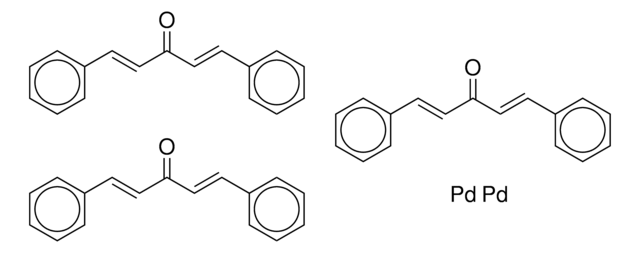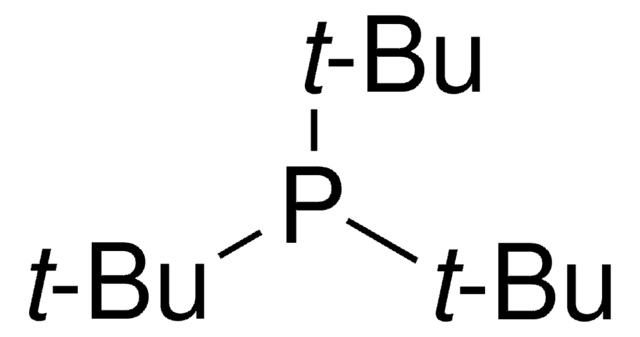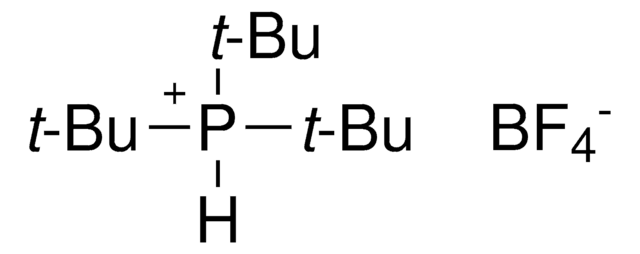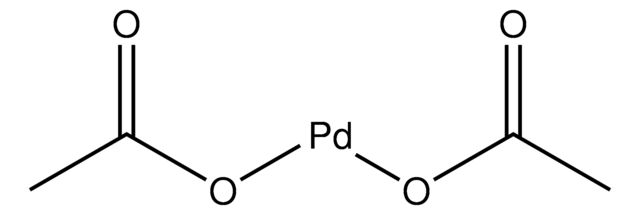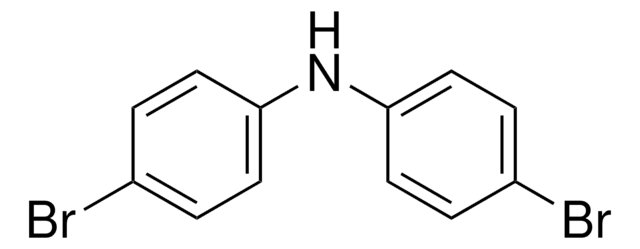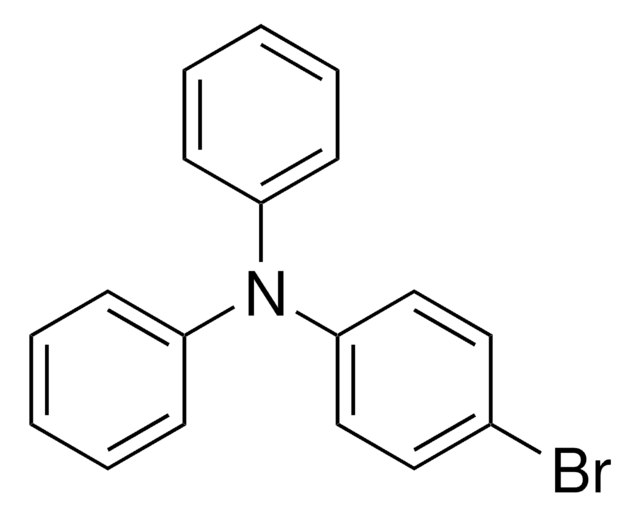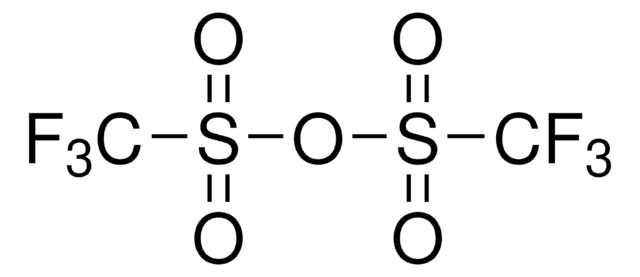Kluczowe dokumenty
767905
4,4′-Dimethoxydiphenylamine
99%
Synonim(y):
4-Biphenylamine,4,4′-dimethoxy-, 4-Methoxy-N-(4-methoxyphenyl)aniline, p,p′-Dimethoxydiphenylamine, Benzenamine,4-methoxy-N-(4-methoxypheny)-, Bis(4-methoxyphenyl)-amine, Bis(4-methoxyphenyl)amine, Bis(p-anisyl)amine, Bis(p-methoxyphenyl)amine, Di-p-anisylamine, Di-p-methoxyphenylamine, Termofleks A
About This Item
Polecane produkty
Poziom jakości
Próba
99%
Formularz
powder
mp
100-104 °C
ciąg SMILES
COc1ccc(Nc2ccc(OC)cc2)cc1
InChI
1S/C14H15NO2/c1-16-13-7-3-11(4-8-13)15-12-5-9-14(17-2)10-6-12/h3-10,15H,1-2H3
Klucz InChI
VCOONNWIINSFBA-UHFFFAOYSA-N
Powiązane kategorie
Opis ogólny
Zastosowanie
Hasło ostrzegawcze
Warning
Zwroty wskazujące rodzaj zagrożenia
Zwroty wskazujące środki ostrożności
Klasyfikacja zagrożeń
Carc. 2 - Eye Irrit. 2 - Skin Irrit. 2 - STOT SE 3
Organy docelowe
Respiratory system
Kod klasy składowania
11 - Combustible Solids
Klasa zagrożenia wodnego (WGK)
WGK 3
Temperatura zapłonu (°F)
Not applicable
Temperatura zapłonu (°C)
Not applicable
Wybierz jedną z najnowszych wersji:
Masz już ten produkt?
Dokumenty związane z niedawno zakupionymi produktami zostały zamieszczone w Bibliotece dokumentów.
Produkty
Professor Chen (Nankai University, China) and his team explain the strategies behind their recent record-breaking organic solar cells, reaching a power conversion efficiency of 17.3%.
Nasz zespół naukowców ma doświadczenie we wszystkich obszarach badań, w tym w naukach przyrodniczych, materiałoznawstwie, syntezie chemicznej, chromatografii, analityce i wielu innych dziedzinach.
Skontaktuj się z zespołem ds. pomocy technicznej